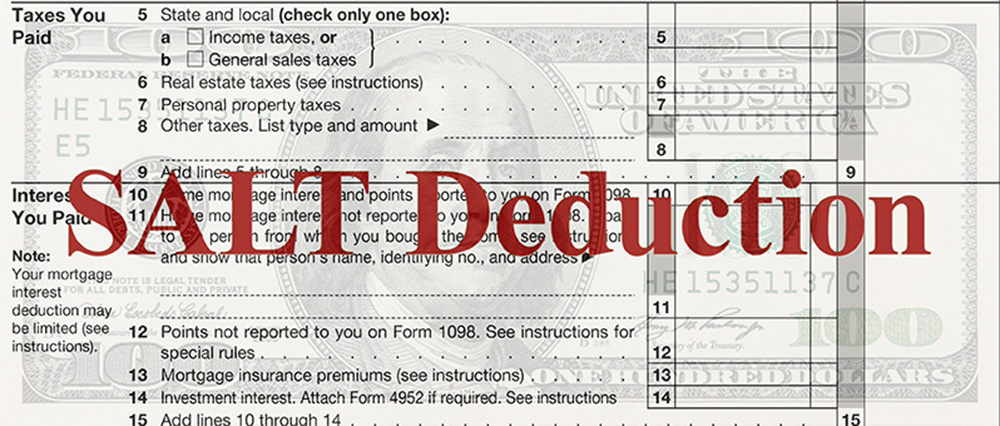State and local tax deductions (SALT) have been a part of the federal income tax code since its inception. Over the years, Congress has added or eliminated related taxes such as motor fuel taxes, sales taxes, and real and personal property taxes. Now they have placed a limit on the deductibility of state and local taxes.
Currently, the tax code allows individuals to deduct state and local income OR sales taxes, but not both. Real estate taxes and personal property taxes may also be deducted. In 2018, Congress, through the Tax Cut and Jobs Act (TCJA), placed a limit on the deductibility of these taxes not to exceed $10,000. This provision of the law is scheduled to remain in place until the end of 2025.
For some taxpayers, the almost doubling of the standard deduction has eliminated the SALT deduction in its entirety, as their itemized deductions do not hit the new level. For many others, however, this $10,000 cap has a significant effect on their annual income taxes.
The reduced benefit of the SALT deduction is more prominent for taxpayers living in states with high-income taxes and/or high real estate taxes. Several of these states have attempted workarounds to create a new deduction that would not be subject to the new cap, or alternatively, create a credit for taxpayers. The IRS recently issued a proposed regulation detailing that federal law controls the characterization of the payments for federal income tax purposes, regardless of how state law characterizes such payments.
As a result, many taxpayers are looking to avoid higher state and local taxes by moving from high-tax states such as California or New York to lower-tax states or one of the seven no-tax states. Taxpayers are also attempting to change their residency by converting their rental property or second home to their primary residence.
This change in residency is much more complicated than taxpayers may expect, and state auditors are routinely challenging these changes of residence. There have been accounts of Auditors using cell phone data, credit card statements and even social media to determine time spent in a particular state. Taxpayers cannot simply state they are spending more than 183 days in the state and that is now their state of residency. Many states require you to sign an Affidavit of domicile, showing that although you may have several residences, their state is your true domicile. If you are planning to change your residency any time soon, be prepared for a residency audit.
Evidence Being Considered in a State and Local Tax Deductions Audit Includes:
- where are your registered to vote;
- what state issued your driver’s license or fishing license;
- where is your business located;
- where do you spend your weekends;
- where does your spouse reside if you travel;
- where does your family reside;
- where does your family dog reside;
- have you brought your personal and important items (prized possessions – artwork, jewelry, photo albums, heirlooms to your new residence?
As with any change to tax law, some taxpayers will benefit, and others will not. If you have any questions, please feel free to reach out to me at ppittman@ppittman.com. I will be glad to answer your questions.




